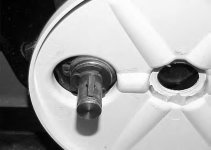OldToroGuy
Member
- Joined
- May 10, 2020
- Threads
- 6
- Messages
- 37
I put the mower all back together and like bertsmobile suggested, I just used CRC White Lithium Grease, judiciously, and let it set before I assembled the pieces. I also replaced the belt while I had it all apart. So I'm happy with the result and now know that I should plan on doing this to the rear wheels either this Fall or next Spring.
I started it up and let it run for several minutes because I wanted to change the oil while I had it (I should have done it first!). While it was running I was surprised at how fast the mower can actually go but when I stopped it and pulled it backwards there is some resistance in rear wheels, they don’t easily roll backwards, is that normal for Honda mowers?
I'm used to a Toro Super Recycler and it isn't as hard to pull back as this Honda HRR216K9.
I started it up and let it run for several minutes because I wanted to change the oil while I had it (I should have done it first!). While it was running I was surprised at how fast the mower can actually go but when I stopped it and pulled it backwards there is some resistance in rear wheels, they don’t easily roll backwards, is that normal for Honda mowers?
I'm used to a Toro Super Recycler and it isn't as hard to pull back as this Honda HRR216K9.


